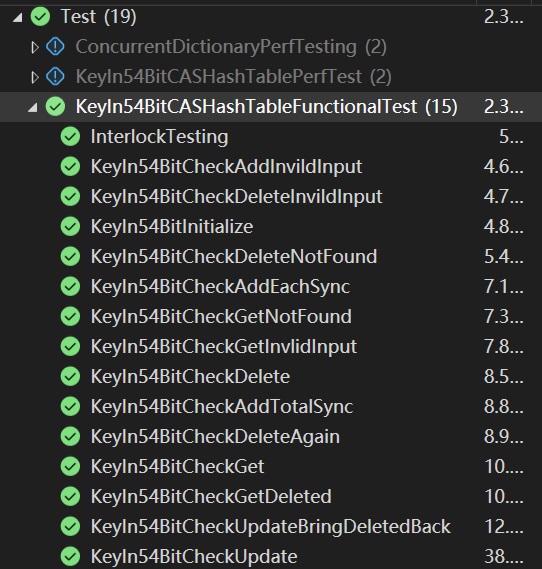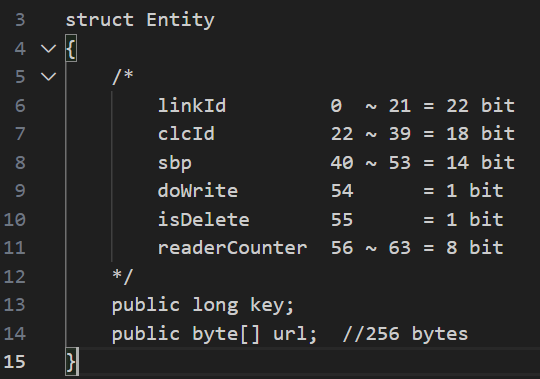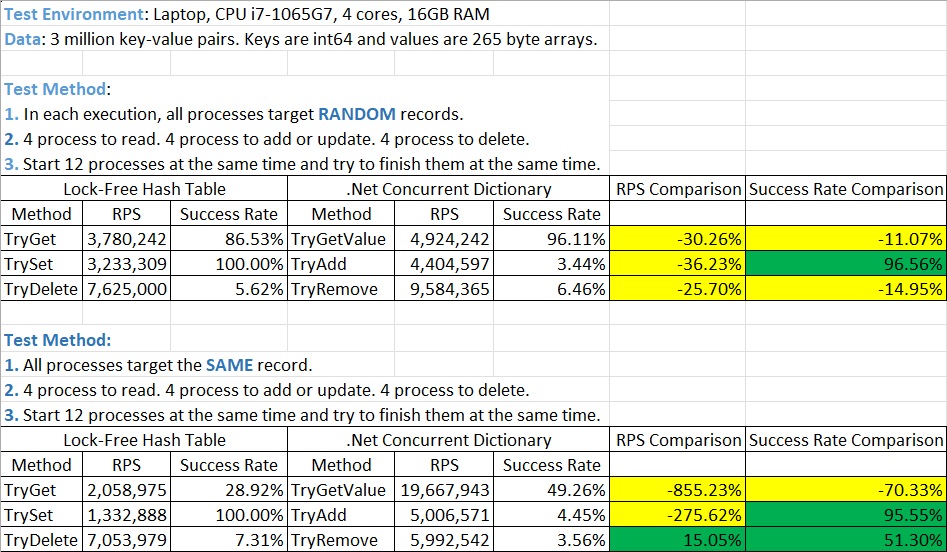Technology showcase: microservices, docker compose, event-driven architecture with RabbitMQ, REST WebApi and my implimentation of lock-free hash table as a in-memory cache, unit test, performance test.
- Environment: VS Code, .NET 8.0, Docker Desktop, RabbitMQ.Client 7.0
- git clone https://github.com/daleiyang/LockFreeHashTable
- Open local floder "LockFreeHashTable" with VS Code.
- Start a Terminal and execute: " docker compose up --build ".
- If all goes well, you should see four microservices successfully built.
- If all goes well, you should see four microservices successfully deployed in Docker Desktop, and they should be able to maintain continuous communication with other microservices.
- git clone https://github.com/daleiyang/LockFreeHashTable
- Open solution "CASHashTable.sln", execute the unit tests.
- Environment: VS 2022 and .NET 8.0
- If you can combine the required keys into a 64-bit integer, using .Net's Concurrent Dictionary is a good option.
- Saw an article outlining the core data structures and algorithms used in the Shanghai Stock Exchange's securities trading system.
- Since 2010, the Shanghai Stock Exchange has been using this core algorithm, and even in the face of the bull market in 2015 and the explosive growth of daily trading volume exceeding one trillion RMB, the system has continued to operate smoothly.
- Implemented in C# as a candidate solution for MS's short link service.
- The key value in the hash table is a 64-bit integer:
- 54 bytes are reserved for the business logic to set the real key value;
- 1 byte is used to mark whether the "writer" has obtained an exclusive lock;
- 1 byte is used to mark whether this record has been deleted or not;
- 8 byte are used to record the number of "readers".
- The combination of linkId, clcId, sbp in the figure above becomes the key value of the business logic, with a size of 54 bytes.
- The code in the figure below is the process of generating a 54-byte key value based on business logic, refer to KeyIn54BitCASHashTable.cs [line 44 to 47].
- In securities trading system, the value is 64-bit integer instead of 256 byte array in my demo. For performance reasons, 64-bit integers are the most efficient choice.
- According to the number of keys in the business logic, select a prime number as the length of the hash table so that the load factor is 0.5. This can control the average number of hash table lookups to 1.1.
- The TrySet, TryGet and TryDelete functions in KeyIn54BitCASHashTable.cs [line 11 to 42] are the entry points.
- KeyIn54BitCASHashTableBase.cs contains detailed comments explaining the principles of each bit operation and how to use the CAS API to read, add, update, and delete data.
- The "do... . while" loop in the figure below is a typical CAS API usage.
Performance Test Report [PerformanceReport.xlsx]
-
KeyIn54BitCASHashTableFunctionalTest.cs is unit tests for lock-free hash table.
-
KeyIn54BitCASHashTablePerfTest.cs is preformance tests for lock-free hash table. Please see [Report] .
-
ConcurrentDictionaryPerfTesting.cs is preformance tests for .Net Concurrent Dictionary. Please see [Report] .








